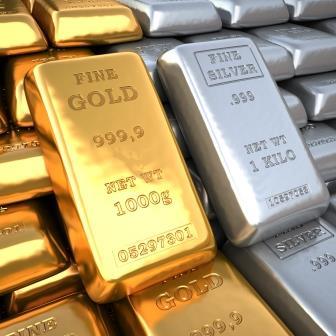Investor demand for safe assets amid rising geopolitical tensions is pushing precious metals prices higher. Since 07 October when the decade-long clash between Israel and Palestine culminated in a war, the most prevalent safe assets, gold and silver rallied by about 10 percent in the various platforms. However, higher interest rates, a firm US dollar, and worries over physical demand would be the near-term headwinds for the metals.
Gold was broadly topsy-turvy in the first half of the year. It started at $1,823 an ounce and went up to $2,072 initially on worries over the global growth outlook and inflation concerns. By the end of the second quarter, it corrected significantly due to rising bond yield and the forecast that high-interest rates in the US would continue for a longer period.
As the global geopolitical tensions rise, investors become more risk averse and seek refuge in assets like gold and silver which are historically perceived as safe investments. The demand for gold and silver is high during times of uncertainty, instability, and geopolitical crisis as these metals are believed to be less exposed to market volatility.
Prior to the war, bullion investors were primarily driven by real interest rates. Robust US economic release, bets of higher-for-longer interest rates lifted the US currency and bond yields. Short-term investors were attracted by higher real income by investing in government bonds and currency which make bullion less attractive in relative terms.
Meanwhile, the US bond yields are still high, and the US dollar is on a recovery path. This would be an immediate headwind for bullion to continue its bullish outlook. The US Fed policy meeting ended last week, and the FED decided to keep interest rates unchanged, and the possibility of future hikes kept alive. The central bank also upgraded its assessment of economic growth and said the growth pace was strong in the previous quarter. This has raised hopes of higher for longer US rates, typically a negative sign for safer assets.
Investors continue to look towards the US policy announcements as that would directly impact the US currency. Higher rates can make alternative investments, such as bonds and savings accounts, more attractive because they offer a higher return. When interest rates rise, the opportunity cost of holding non-interest-bearing assets like gold increases and it can lead to a decline in demand for precious assets.
Demand from top consumers like India and China may also influence consumer confidence. Though there was an increase in China’s demand for physical gold in the first half of the year, demand from India, the second-largest consumer of the metal has posted a decline. As per the latest World Gold Council data, domestic gold demand during this festive season is the lowest in three years due to record-high prices.
Unlike gold, the rally witnessed in silver is likely to be short-lived. Rather than an investment asset, silver demand is largely derived from industrial areas. Since China is the key demand driver of the metal, the recent economic challenges in the country would dent major gains in the metal. China’s economy recently suffered several challenges in areas like the property sector, exports, debt, unemployment, consumption, spending, and investment weighing the demand prospects of commodities that are used for industrial purposes.
First published in Economic Times








